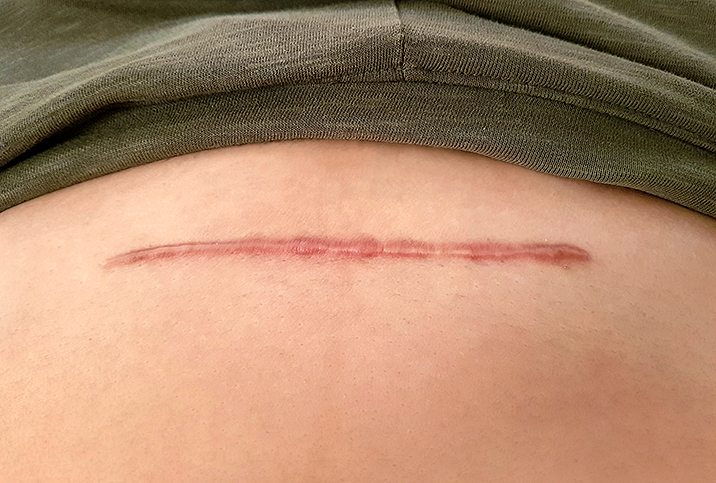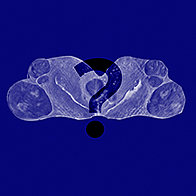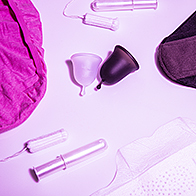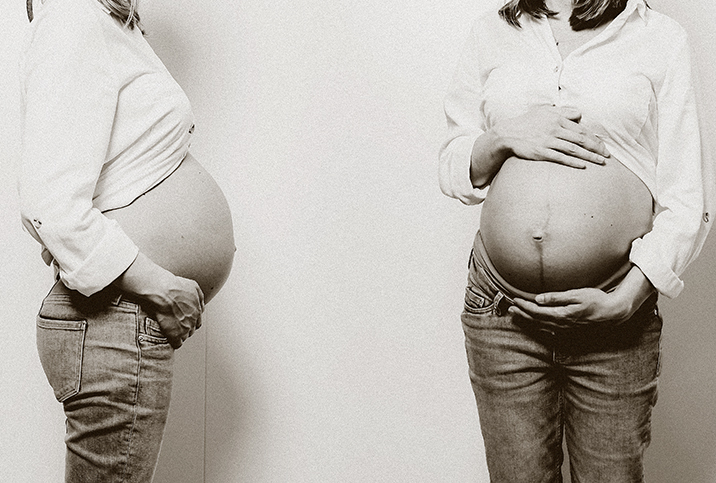For Three Years, I Didn't Know I Had a Tumor in My Womb

For eight months, my annual gynecological checkup kept getting canceled because of the coronavirus pandemic. For three years, I've had lengthy and painful periods. Three gynecologists wrote off my symptoms as regular period pain. An ultrasound would have revealed the truth, but the doctors minimized my complaints and prescribed birth control pills instead of seeking out the cause of the problem.
I finally saw a gynecologist in June 2021, and told her about my lengthy menstruation, bloating and pain. She performed a vaginal ultrasound and discovered a fibroid blocking my right fallopian tube. She told me the placement meant if I were to get pregnant, I'd likely have a miscarriage. If I did carry a baby to term, she said, I'd require a C-section to prevent hemorrhaging.
The doctor encouraged me to have a hysterectomy. I went to a second gynecologist who gave the same prognosis and recommended the same. But, because my fibroid isn't life-threatening and I want to carry a baby one day, a hysterectomy is not an option I'm willing to consider.
What are fibroids?
"Fibroids are muscular tumors that grow on the uterine walls," explained Suzanne Slonim, M.D., founder and medical director for Fibroid Institute Dallas.
There are four main types of fibroids (also called leiomyomas or myomas):
- Intramural fibroids are the most common and grow inside the muscles of the uterine wall.
- Submucosal fibroids are inside the uterine wall below the lining and may cause heavy bleeding during menstruation.
- Subserosal fibroids grow outside the uterine walls and may put pressure on the bladder, bowels and abdomen.
- Pedunculated fibroids are on a stalk of tissue inside or outside the uterus.
In the United States, an estimated 26 million women between the ages of 15 and 50 have uterine fibroids. According to a 2003 study in the American Journal of Obstetrics and Gynecology, more than 80 percent of Black women and almost 70 percent of white women will develop uterine fibroids by age 50, but only 20 percent to 50 percent will have symptoms.
The difficulty of diagnosis
Fibroids are usually diagnosed during a routine pelvic exam. "Fibroids may be suspected based on the size or shape of the uterus in a physical exam or because of a woman's symptoms," Slonim stated. "Generally, your physician will order an ultrasound, CT scan or MRI."
However, Slonim explained, "screening for fibroids is not routinely performed." Additionally, she noted that people may experience fibroid pain and normalize the symptoms, which is what the gynecologists I had seen did before my diagnosis.
People wait an average of 3.6 years before seeking treatment for uterine fibroids. I had unknowingly been seeking treatment the entire time my fibroid was growing, but my complaints were dismissed as normal period pains. "Unfortunately, the lines between normal and abnormal become blurred," Slonim said.
My fibroid diagnosis explained the symptoms I've dealt with for three years. (Both gynecologists were confident the fibroid had been growing for three years.) I was enraged by the previous three gynecologists' medical neglect.
Slonim explained that until fibroids are treated, symptoms such as "abnormally long periods, excessive bleeding, which can cause anemia, fatigue, pain during intercourse, debilitating cramps, back or leg pain, weight gain, protruding abdomen, urinary frequency, constipation, infertility, or miscarriage" can occur.
Little research has been done on fibroids, which may explain why I was undiagnosed for so long and my previous gynecologists weren't able to offer solutions to alleviate my symptoms.
A new bill introduced to Congress may rectify this. If it passes, the Stephanie Tubbs Jones Uterine Fibroid Research and Education Act of 2021 would "expand, intensify, and coordinate programs for the conduct and support of research with respect to uterine fibroids," and $30 million annually would be dedicated to this research for the next five years (2022–2026).
Treatment options for uterine fibroids
Endometrial ablation is a common procedure for fibroids, resulting in the inability to become pregnant. "The procedure destroys the inside lining of the uterus. When it heals, the scar tissue tends to bleed much less than normal endometrium," Slonim explained. "This technique may be a very good option to treat the bleeding symptoms of fibroids, but it will not reduce their size or other symptoms."
A hysterectomy will remove the fibroids and the uterus, rendering childbirth impossible. "It's the only procedure which assures there will never be fibroid problems in the future," Slonim said.
A myomectomy, which I'm considering, surgically removes the fibroids but not the uterus. A patient is under general anesthesia during the surgery. There are three types of myomectomy that may be performed:
- The most common approach is a large incision through the abdomen to the uterus.
- A hysteroscopic myomectomy uses a scope inserted into the vagina to remove the fibroids.
- A laparoscopic myomectomy uses a series of small incisions in the abdomen to remove the fibroids.
Uterine fibroid embolization (UFE) is an alternative to surgery and is minimally invasive. However, this procedure may make it difficult to get pregnant in the future. "UFE involves passing a tiny tube through the arteries right to the blood supply to the fibroids," Slonim explained. "Small particles are released that block the small blood vessels feeding the fibroids, which causes the fibroids to die and shrink rather than having to be surgically removed."
Since my diagnosis, I've seen six gynecologists. Per the third and fourth gynecologists, the fibroid has moved and is no longer a threat to a live birth. Both suggested I undergo a laparoscopic myomectomy. A sixth gynecologist encouraged me not to risk surgery, as it wouldn't guarantee relief from my symptoms.
If you have fibroids and plan to become pregnant, Slonim suggests waiting to have fibroid surgery until after you're done having babies. "The majority of women with fibroids have no problem getting pregnant or having a baby," she explained. "If a woman can avoid interfering with the uterus before pregnancy, that's her best choice."
For now, I'm monitoring my fibroids with sonograms every six months until I'm ready to get pregnant.




















